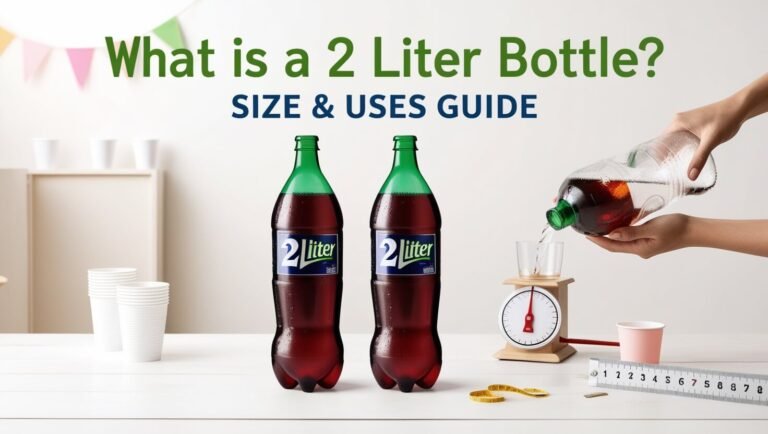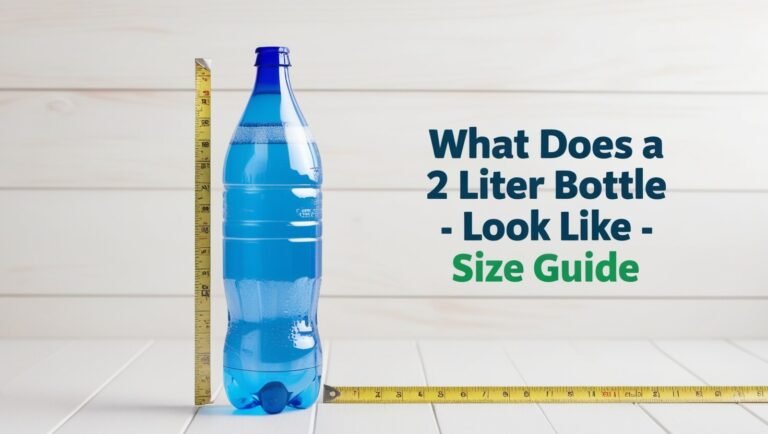First 2-Liter Soda: Complete History & Origin Story

Ever curious about the two-liter soft drink bottle’s beginnings? The tale of its creation is a captivating look into the growth of the beverage world. It starts with the invention of carbonated water and ends with the PET bottle’s game-changing design. This journey shows how the two-liter bottle became a key part of our lives.
Let’s dive into the full story of the first two-liter soda. It’s a story that spans ages, highlighting the creativity of the beverage industry.
The Birth of Carbonated Beverages: From Priestley to Modern Soft Drinks
The history of carbonated drinks started in the 17th century. The first soft drinks were water with lemon juice and honey. But Joseph Priestley’s discovery in 1767 changed everything.
Joseph Priestley’s Breakthrough Discovery
In Leeds, England, Joseph Priestley made a big find. He created carbonated water by placing a bowl of water above a beer vat. His invention of soda water was key to soft drinks. In 1773, he won the Copley Medal for his work.
Early Carbonation Methods and Equipment
John Mervin Nooth made Priestley’s idea better for stores. Torbern Bergman from Sweden also helped by creating a big machine for making carbonated water. Thomas Henry started selling artificial mineral water in the 1770s, helping carbonated drinks grow.
Commercial Production Beginnings
In 1783, Johann Jacob Schweppe started making bottled carbonated water. He founded the Schweppes Company in Geneva. By the 1820s, ginger and lemon were added to drinks. In 1886, John Pemberton created Coca-Cola, the first cola-flavored drink.
Today, the soft drink world is huge. Over 34 billion gallons are sold every year in more than 200 countries. The U.S. is a big part of this market, showing how much people love these drinks.
What Soda Was the First to be Sold in a 2-Liter Bottle?
In 1970, Pepsi made history by launching the first 2-liter bottle. John Sculley, then PepsiCo’s marketing vice president, led this effort. He aimed to close the gap between Pepsi and Coca-Cola.
The 2-liter bottle changed the game in soft drinks. It became a hit, making Pepsi the second-biggest brand in the US. Sculley’s next big move was becoming Apple’s CEO from 1983 to 1993.
| Soft Drink Brand | Market Share |
|---|---|
| Coca-Cola | Market leader |
| Pepsi | Second largest |
The 2-liter bottle was a game-changer for soft drinks. It made drinks more convenient and affordable. Today, it’s a common sight in homes and stores, meeting the needs of many.
The Revolutionary PET Bottle Design and Development
As more people wanted carbonated drinks, a better packaging solution was needed. Nathaniel Wyeth, an engineer from DuPont, led a team. They changed the game with the iconic two-liter soft drink container.
Nathaniel Wyeth’s Patent Innovation
In 1973, Nathaniel Wyeth got a patent for the two-liter PET bottle. This design cut costs and made bottles stronger and more attractive than glass ones.
Technical Specifications and Materials
- The two-liter PET bottle is a one-piece design, made entirely from the PET plastic using the blow molding process.
- The bottle features a molded base with radial corrugation, providing added strength and stability to the structure.
- Typical dimensions include a height of 300 to 330 mm and a diameter of 100 to 120 mm.
Manufacturing Process Evolution
Over time, making two-liter PET bottles has gotten better. Early bottles had a separate base glued on, but now they’re one piece. This change made bottles look better and work better too.
“The introduction of the two-liter PET bottle marked a significant milestone in the soft drink industry, paving the way for greater accessibility and convenience for consumers.”
Nathaniel Wyeth and the team at DuPont changed the soft drink world. Their work made drinking carbonated beverages easier and more fun for everyone.
Soft Drink Industry Transformation After 2-Liter Introduction
The two-liter bottle changed the beverage marketing world. It became a key product in the U.S. and led to other sizes like 500 milliliters, 1 liter, and 3 liters. This innovation opened up new packaging options.
In 1985, the three-liter bottle arrived, adding more choices for consumers. This variety helped soft drink companies meet different needs. They could offer sizes for any occasion, from a single drink to a family event.
The two-liter bottle’s success changed the brand history of soft drinks. It increased demand and changed how companies packaged their drinks. Soon, companies offered many sizes to fit what customers wanted.
| Metric Size | Year Introduced |
|---|---|
| 2-liter bottle | The pioneering introduction |
| 500 milliliters | Subsequent to the 2-liter bottle |
| 1 liter | Subsequent to the 2-liter bottle |
| 3 liters | 1985 |
The industry quickly adapted to the two-liter bottle and other sizes. This showed how smart soft drink companies were in beverage marketing. It led to a more varied and customer-focused market, where brands could meet changing needs.
Modern Impact and Consumer Adoption of 2-Liter Bottles
The 2-liter plastic bottle was introduced in 1978. It changed the soft drink industry forever. These bottles were bigger and more convenient, quickly becoming a common sight in homes and stores.
Today, “two-liter” is often linked with soft drink packaging in the U.S. This shows how well this bottle design has done in the market.
Market Penetration and Sales Growth
The 2-liter bottle is now a key player in the soft drink market. Its large size and resealable cap make it a favorite among consumers. As the industry adopted this new format, sales of 2-liter soft drinks have increased.
This growth shows how much people value the convenience and savings of the 2-liter bottle. It’s a big part of why it’s so popular in the U.S.
Environmental Considerations and Recycling
The rise of the 2-liter bottle has led to important environmental thoughts. Used 2-liter bottles are recycled into many products, like carpeting and polyester fabric. They’re even used to make new soft drink bottles.
Recycling PET plastic bottles is a big part of the beverage industry’s sustainability efforts. It helps cut down on waste and supports a more circular economy.
Great Questions:
What was the first soft drink to be sold in a 2-liter bottle?
PepsiCo introduced the first two-liter sized soft drink bottle in 1970. This was a big change thanks to John Sculley’s market research. Sculley later became famous for leading Apple Inc. from 1983 to 1993.
When was carbonated water first discovered?
Joseph Priestley found carbonated water in 1767. He did this by placing a bowl of distilled water above a beer vat in Leeds, England. His discovery of soda water was key to soft drinks.
How were early carbonated beverages produced and sold?
John Mervin Nooth made Priestley’s design better for pharmacies. Swedish chemist Torbern Bergman created a way to make lots of carbonated water. Thomas Henry started selling artificial mineral water in the 1770s.
Johann Jacob Schweppe found a way to bottle carbonated mineral water. He started the Schweppes Company in Geneva in 1783.
What is the design and manufacturing process for 2-liter soda bottles?
Nathaniel Wyeth of DuPont designed the two-liter bottle and its making process. He got the patent in 1973. The bottle is made from PET plastic using a special process.
Today, two-liter bottles are made in one piece of PET. They have a special base for strength and stability.
How did the introduction of 2-liter bottles impact the soft drink industry?
The two-liter bottle changed the soft drink world a lot. It was one of the first products sold by a round number in the U.S. The success of the two-liter bottle led to other sizes like 500 milliliters, 1 liter, and 3 liters.
What are some of the modern uses for recycled 2-liter bottles?
Recycled two-liter bottles are turned into many things. They make carpeting, boat hulls, and polyester fabric. They also make jackets, sleeping bags, mattresses, and pillows.
They are used for recycling bins, artificial floating islands, scouring pads, and even new soft drink bottles. Recycling PET bottles is key to the beverage industry’s green efforts.




